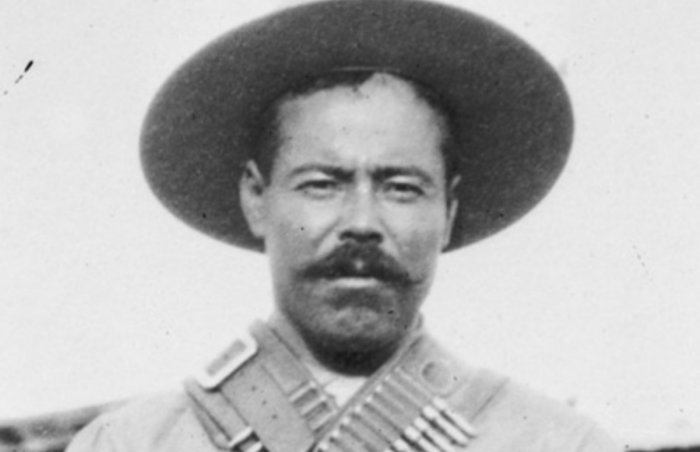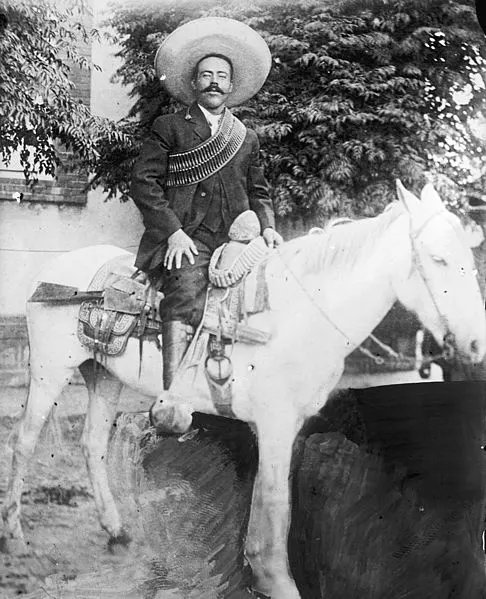Pancho Villa – Mexico’s Robin Hood – A Ruthless Bandit Or A Hero?
Ellen Lloyd - AncientPages.com - Some admired and called him a hero, but some said he was a brutal bandit and cold-blooded murderer. His charisma, extraordinary leadership skills, and courage gave him legendary status, and there is no doubt he made an impression on those he met.
Nevertheless, certain parts of his life are still shrouded in mystery, and Pancho Villa's story fascinates the modern world.
Pancho Villa (1878 - 1923). Credit: Public Domain
No one really knows how everything started, and there is conflicting information about Pacho Villa's early life. Still, it seems sad and tragic events forced Pancho Villa to take matters into his own hands and fight for justice. Like everyone, Pancho Villa had a choice, so he sought revenge on those who had caused him pain in his early life.
Who Was Pancho Villa?
Born on 5 June 1878 and named José Doroteo Arango Arámbula at birth, Pancho Villa became a bandit at a young age. He grew up at the Rancho de la Coyotada in Durango, northwest Mexico. As a young boy, he had not much time for education. After his father's death, Panchi Villa had to quit his studies at the local church-run school and help his mother.
When Pancho Villa was only sixteen, he shot Agustín Lopez Negrete, a hacienda owner who had raped his sister. Later, he stole a horse and fled to Durango's Sierra Madre Occidental region, where he roamed the hills as a thief.
It was the beginning of his criminal history. He spent nine years in the mountains, joining a band of outlaws led by the famous bandit leader Ignacio Parra. At that time, Villa was known under the name "Arango."
On one occasion, in 1902, he was arrested for stealing mules and assault. He was spared a death sentence because he had good connections with influential people.
How Pancho Villa Became A Mexican Robin Hood
After deserting the Federal Army, he fled to the neighboring state of Chihuahua. During this period, Pancho became known as Mexico's Robin Hood.
Pancho Villa. Credit: Public Domain
He stole from the rich and gave to the poor so they could feed their families. Poor laborers loved Pancho. He was a criminal but helped those in need, and these deeds made him a hero. One can say that Pancho reminds us in some ways of Bulla Felix, a legendary Italian leader of outlaws who robbed the rich and gave to the poor.
However, Pancho Villa was undoubtedly a dangerous man who showed no mercy to traitors. If people refused to pay his gang, he could murder the person horribly and painfully. He earned his reputation as one of Mexico's best gunfighters, nicknamed "El Centauro del Norte" (The Centaur of the North). His temper and fury were well-known, but his soldiers respected him.
"In 1914, Villa refused to be elected president of Mexico, a title that ended in the hands of Carranza, who rapidly began to impose his new dictatorship, promptly using his power over the press to depict Pancho Villa as a monstrous and brutal bandit leader to alienate him from the people's favor." (American Myths, Legends, and Tall Tales: An Encyclopedia of American Folklore)
During the Mexican Revolution, Villa's military campaigns and rebel forces were praised by supporters, but in 1915 his men suffered a massive defeat at the Battle of Celaya. By the end of 1915, Villa was on the run, and the United States government recognized Carranza.
Pancho Villa had no choice but to cross the border and hide in the mountains. Only a few men were loyal to him, and President Wilson sent 5,000 men to hunt Villa down.
In 1920, Carranza was assassinated, and Villa was offered amnesty and a large estate in exchange for his retirement. Villa accepted the offer but was killed three years later in Parral, Mexico.
Equestrian bronze of Villa in Chihuahua, Chihuahua. Image credit: Lyricmac - CC BY-SA 3.0
The "circumstances surrounding his death are still unclear and filled with legendary elements such as the following bizarre events, including the exhumation and decapitation of his body. Local rumors say that an American treasure hunter beheaded him to sell his skull to an eccentric millionaire who collected the heads of historical figures," Claudio Butticè writes in American Myths, Legends, and Tall Tales, An Encyclopedia of American Folklore.
Pancho Villa Became A Legend And Is Still Remembered
Villa legends pervade not only Mexico but the United States as well and have even reached beyond. They exist not only in the popular mind, in popular tradition, and in popular ballads but also in movies made in Mexico and Hollywood.
As Friedrich Katz writes in the book, The Life and Times of Pancho Villa, "alongside Moctezuma and Benito Juárez, Pancho Villa is probably the best-known Mexican personality worldwide.
'There are legends of Villa the Robin Hood, Villa the Napoleon of Mexico, Villa the ruthless killer, Villa the womanizer, and Villa as the only foreigner who has attacked the mainland of the United States since the war of 1812. Whether correct or incorrect, exaggerated or true to life, these legends have resulted in Pancho Villa, the leader obscuring his movement, and the myths covering the leader.
So much attention has focused on Villa himself that the characteristics of his movement, in many respects, make it unique in Latin America and, in some ways, among twentieth-century revolutions, have either been forgotten or neglected. Villa's Division del Norte was probably the largest revolutionary army that Latin America ever produced. The revolution he led was the only social revolution ever to occur along the border of the United States. It was also one of the few genuine revolutions produced by what might best be described as a frontier region on the American continent.'
Written by Ellen Lloyd – AncientPages.com
Updated on January 2, 2024
Copyright © AncientPages.com All rights reserved. This material may not be published, broadcast, rewritten or redistributed in whole or part without the express written permission of AncientPages.com
Expand for referencesMore From Ancient Pages
-
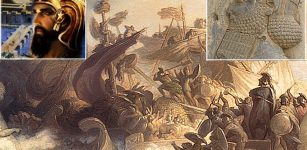 Achaemenid Empire Was The World’s Largest Ancient Empire
Featured Stories | May 24, 2021
Achaemenid Empire Was The World’s Largest Ancient Empire
Featured Stories | May 24, 2021 -
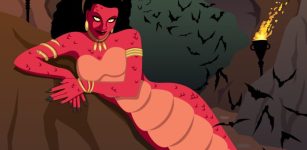 Echidna – Mother Of All Monsters – A Cave-Dwelling Female Hybrid Creature In Greek Mythology
Featured Stories | Jan 13, 2022
Echidna – Mother Of All Monsters – A Cave-Dwelling Female Hybrid Creature In Greek Mythology
Featured Stories | Jan 13, 2022 -
 Huge Ring Of Ancient Shafts Discovered Near Stonehenge
Archaeology | Jun 22, 2020
Huge Ring Of Ancient Shafts Discovered Near Stonehenge
Archaeology | Jun 22, 2020 -
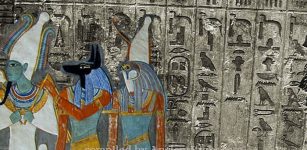 Pyramid Texts Of Ancient Egypt That Charted Journey Of Pharaohs Into Afterlife
Featured Stories | Feb 26, 2020
Pyramid Texts Of Ancient Egypt That Charted Journey Of Pharaohs Into Afterlife
Featured Stories | Feb 26, 2020 -
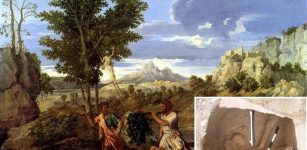 Mysterious Biblical Canaanites – What Ancient DNA Reveals About Their Fate
Archaeology | Jul 28, 2017
Mysterious Biblical Canaanites – What Ancient DNA Reveals About Their Fate
Archaeology | Jul 28, 2017 -
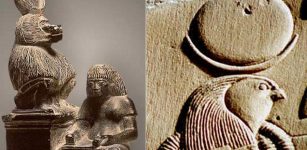 Full Moon In Ancient Myths And Legends Of Our Ancestors
Featured Stories | Nov 14, 2016
Full Moon In Ancient Myths And Legends Of Our Ancestors
Featured Stories | Nov 14, 2016 -
 Mayan Maize God And Ancient City Of El Mirador
Featured Stories | Apr 25, 2019
Mayan Maize God And Ancient City Of El Mirador
Featured Stories | Apr 25, 2019 -
 Stone Tools Reflect Three Waves Of Migration Of The Earliest Homo Sapiens Into Europe
Archaeology | May 4, 2023
Stone Tools Reflect Three Waves Of Migration Of The Earliest Homo Sapiens Into Europe
Archaeology | May 4, 2023 -
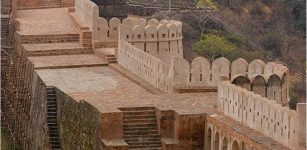 Magnificent And Massive Great Wall Of India – Astonishing Ancient Structure Shrouded In Secrecy
Civilizations | Jul 7, 2015
Magnificent And Massive Great Wall Of India – Astonishing Ancient Structure Shrouded In Secrecy
Civilizations | Jul 7, 2015 -
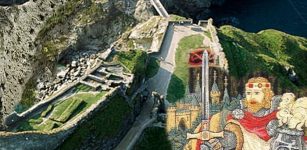 Was Tintagel Castle A Fortress Used By Iconic Hero King Arthur?
Featured Stories | Jul 12, 2022
Was Tintagel Castle A Fortress Used By Iconic Hero King Arthur?
Featured Stories | Jul 12, 2022 -
 Beer ‘Chicha’ Helped To Keep Peruvian Wari Empire Stable – New Study
Archaeology | Apr 23, 2019
Beer ‘Chicha’ Helped To Keep Peruvian Wari Empire Stable – New Study
Archaeology | Apr 23, 2019 -
 Oldest Preserved Remains Of Bed Bug Found In Paisley Caves, Oregon
Archaeology | Apr 7, 2017
Oldest Preserved Remains Of Bed Bug Found In Paisley Caves, Oregon
Archaeology | Apr 7, 2017 -
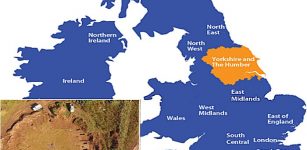 Circular-Shaped 4000-Year-Old Wooden Henge Discovered In Yorkshire, Historic County of Northern England
Archaeology | Jan 3, 2018
Circular-Shaped 4000-Year-Old Wooden Henge Discovered In Yorkshire, Historic County of Northern England
Archaeology | Jan 3, 2018 -
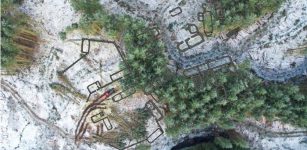 Ruins Of Post-Medieval Brunell Township Discovered In Glen Brittle Forest On The Isle of Skye
Archaeology | Feb 29, 2024
Ruins Of Post-Medieval Brunell Township Discovered In Glen Brittle Forest On The Isle of Skye
Archaeology | Feb 29, 2024 -
 Ruins Of Roman Temple From Reign Of Emperor Antonius Pius Unearthed In Egypt
Archaeology | May 15, 2018
Ruins Of Roman Temple From Reign Of Emperor Antonius Pius Unearthed In Egypt
Archaeology | May 15, 2018 -
 Why Is A ‘Piggy Bank’ Shaped Like A Pig?
Ancient History Facts | Jun 11, 2018
Why Is A ‘Piggy Bank’ Shaped Like A Pig?
Ancient History Facts | Jun 11, 2018 -
 Dinosaurs Were The First To Take The Perspectives Of Others
Fossils | Jun 1, 2023
Dinosaurs Were The First To Take The Perspectives Of Others
Fossils | Jun 1, 2023 -
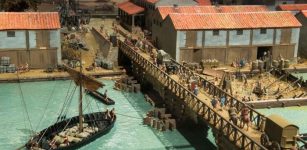 Londinium: Ancient Roman Outpost That Became Powerful City Of London
Featured Stories | Aug 16, 2018
Londinium: Ancient Roman Outpost That Became Powerful City Of London
Featured Stories | Aug 16, 2018 -
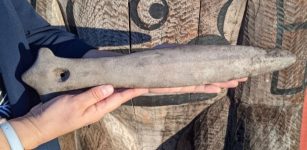 Unique Ancient Coast Salish War Club Accidently Discovered In British Columbia Backyard
Archaeology | Mar 22, 2022
Unique Ancient Coast Salish War Club Accidently Discovered In British Columbia Backyard
Archaeology | Mar 22, 2022 -
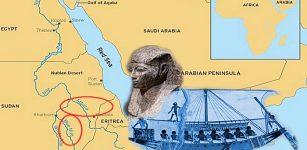 Mysterious Location Of The Amazing Land Of Punt – Can This Puzzle Be Solved One Day?
Featured Stories | Jul 18, 2016
Mysterious Location Of The Amazing Land Of Punt – Can This Puzzle Be Solved One Day?
Featured Stories | Jul 18, 2016

